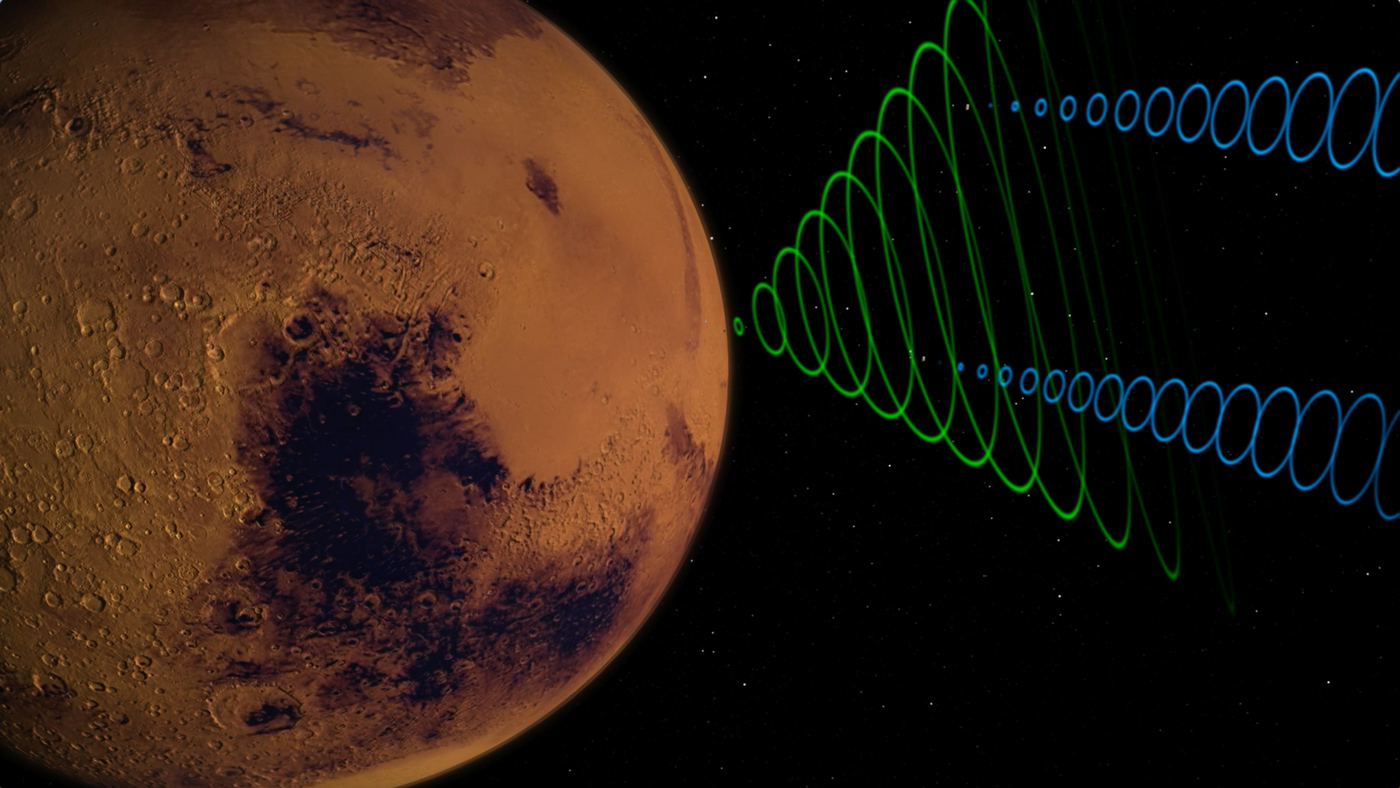
On November 26, NASA’s InSight spacecraft will touch down in Elysium Planitia on Mars, where it will “peer” deep into the subsurface to study the planet’s interior geology. As of right now, InSight is on course for what hopefully will be a very successful landing.
Live Video of Landing on Mars
credit: NASA
“Landing on Mars is hard. It takes skill, focus and years of preparation,” said Thomas Zurbuchen, associate administrator for the Science Mission Directorate at NASA Headquarters in Washington. “Keeping in mind our ambitious goal to eventually send humans to the surface of the Moon and then Mars, I know that our incredible science and engineering team – the only in the world to have successfully landed spacecraft on the Martian surface – will do everything they can to successfully land InSight on the Red Planet.”
InSight is the first mission to study the interior of Mars, and the first stationary lander since the Phoenix mission, which landed near the north pole in 2008. InSight was launched on May 5, 2018, on a United Launch Alliance Atlas V “401” rocket from Vandenberg AFB, California.
When InSight reaches Mars, it will experience the famous “seven minutes of terror” as it plunges through the atmosphere. It will hit the top of the atmosphere at 12,300 mph (19,800 kph) before gradually slowing down to 5 mph (8 kph) – about human jogging speed – before actually landing.


“There’s a reason engineers call landing on Mars ‘seven minutes of terror,'” said Rob Grover, InSight’s entry, descent and landing (EDL) lead, based at NASA’s Jet Propulsion Laboratory in Pasadena, California. “We can’t joystick the landing, so we have to rely on the commands we pre-program into the spacecraft. We’ve spent years testing our plans, learning from other Mars landings and studying all the conditions Mars can throw at us. And we’re going to stay vigilant till InSight settles into its home in the Elysium Planitia region.”
So how will the mission team know the spacecraft has landed safely? One big sign will be if the two briefcase-sized CubeSat probes, flying along with InSight and known as Mars Cube One (MarCO), relay InSight data back to Earth in near-real time during their flyby on the same day.
“Just by surviving the trip so far, the two MarCO satellites have made a giant leap for CubeSats,” said Anne Marinan, a MarCO systems engineer based at JPL. “And now we are gearing up for the MarCOs’ next test – serving as a possible model for a new kind of interplanetary communications relay.”
MarCO is one of several ways that the mission team will know if InSight landed intact. They will also listen for radio signals using the National Science Foundation’s Green Bank Observatory in Green Bank, West Virginia and the Max Planck Institute for Radio Astronomy’s facility at Effelsberg, Germany. Those results will be relayed to Mission Control at JPL and engineers at Lockheed Martin Space in Denver.

InSight itself will say “I made it!” after it touches down and then again seven minutes later, by sending a tone beacon. If NASA’s Deep Space Network picks up this beep, it will be a good sign that InSight survived the landing. Engineers will the need to wait until early evening to find out if the lander successfully deployed its solar arrays.
The landing will also be monitored by NASA’s Mars Reconnaissance Orbiter and Mars Odyssey spacecraft from orbit, which will record InSight’s data as it descends. Mars Odyssey will also serve as a data relay for InSight during surface operations, along with MRO, the Mars Atmosphere and Volatile Evolution mission (MAVEN) and the European Space Agency’s Trace Gas Orbiter (TGO).
“Landing on Mars is exciting, but scientists are looking forward to the time after InSight lands,” said Lori Glaze, acting director of the Planetary Science Division at NASA Headquarters. “Once InSight is settled on the Red Planet and its instruments are deployed, it will start collecting valuable information about the structure of Mars’ deep interior – information that will help us understand the formation and evolution of all rocky planets, including the one we call home.”
In a departure from other landers and rovers, InSight will remotely study the deep interior of Mars, the first mission to do so, looking for evidence of current geologic activity and clues as to how the planet formed and evolved over billions of years. While other missions have focused on surface geology, habitability and the atmosphere, this one will focus on what is happening deep beneath the surface.

“Previous missions haven’t gone more than skin-deep at Mars,” added Sue Smrekar, the InSight mission’s deputy principal investigator at JPL. “InSight scientists can’t wait to explore the heart of Mars.”
InSight is an exciting new mission, and in just a few days it will (hopefully) land safely and begin its quest to explore the deep interior of Mars, something never done before – until now. The findings will help scientists understand how small rocky planets like Mars and Earth formed, not only in our Solar System but in other planetary systems as well.
A listing of mission timeline milestones is available here and more information about InSight is on the mission website.
FOLLOW AmericaSpace on Facebook and Twitter!





